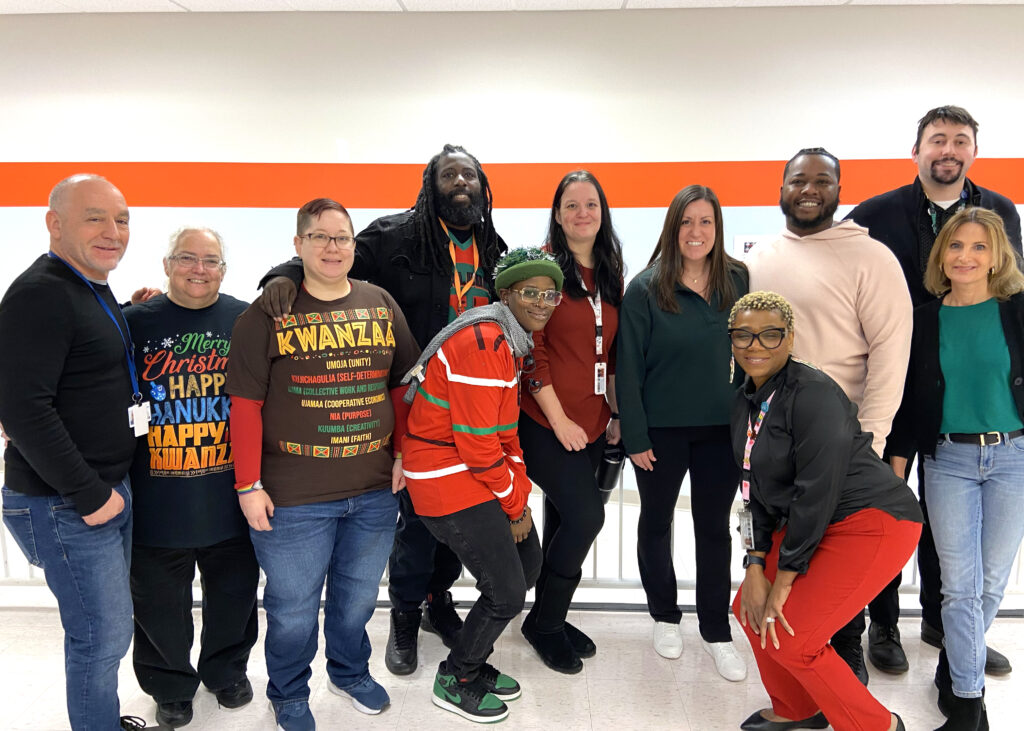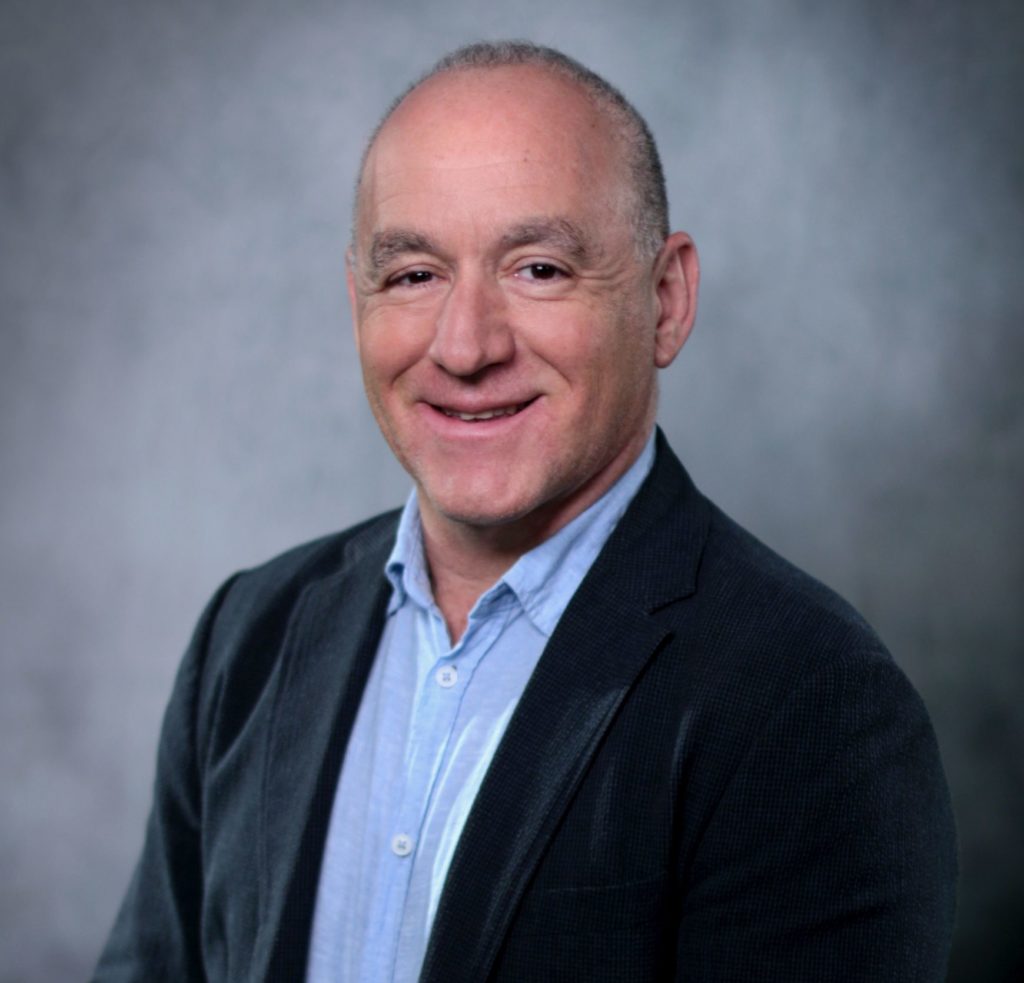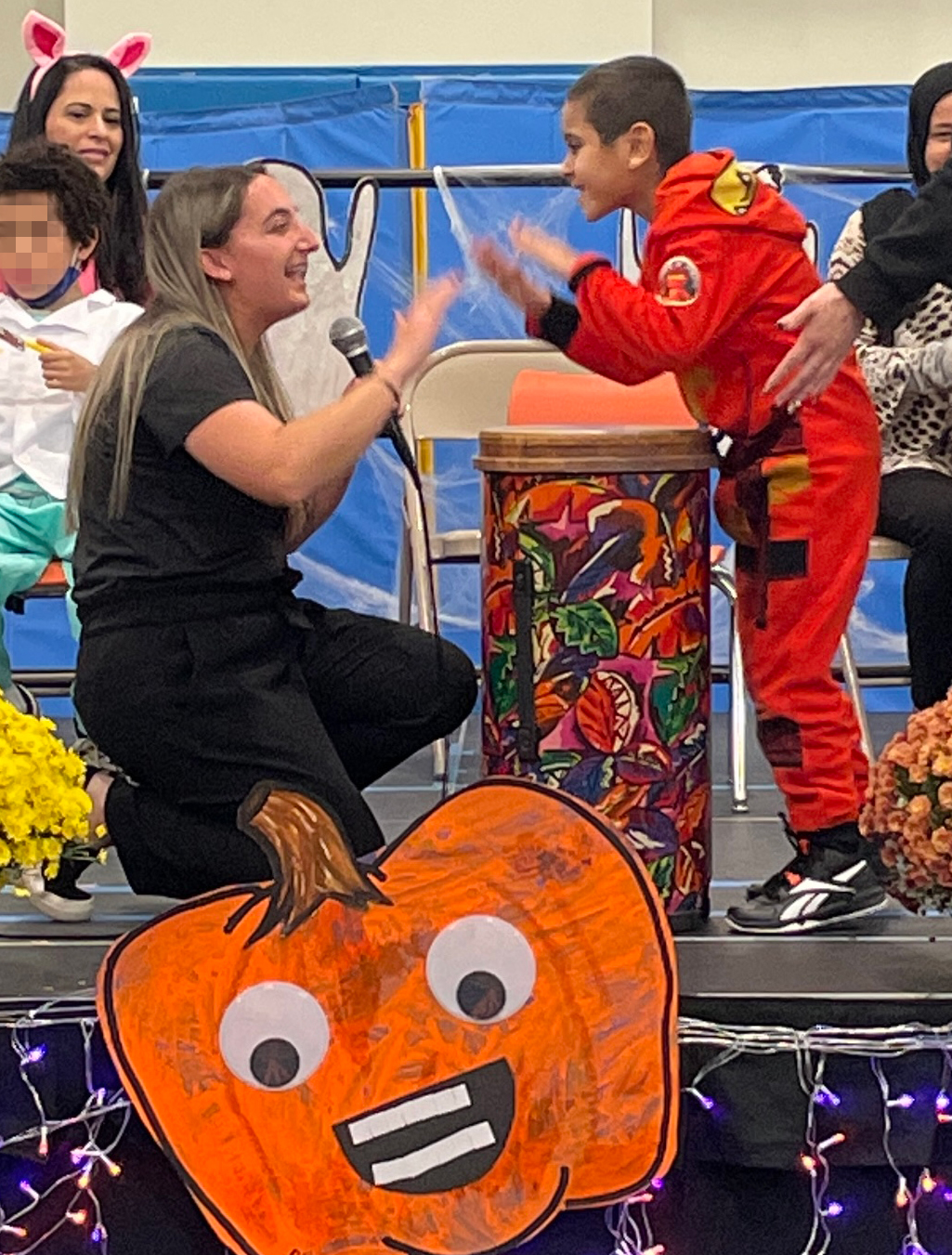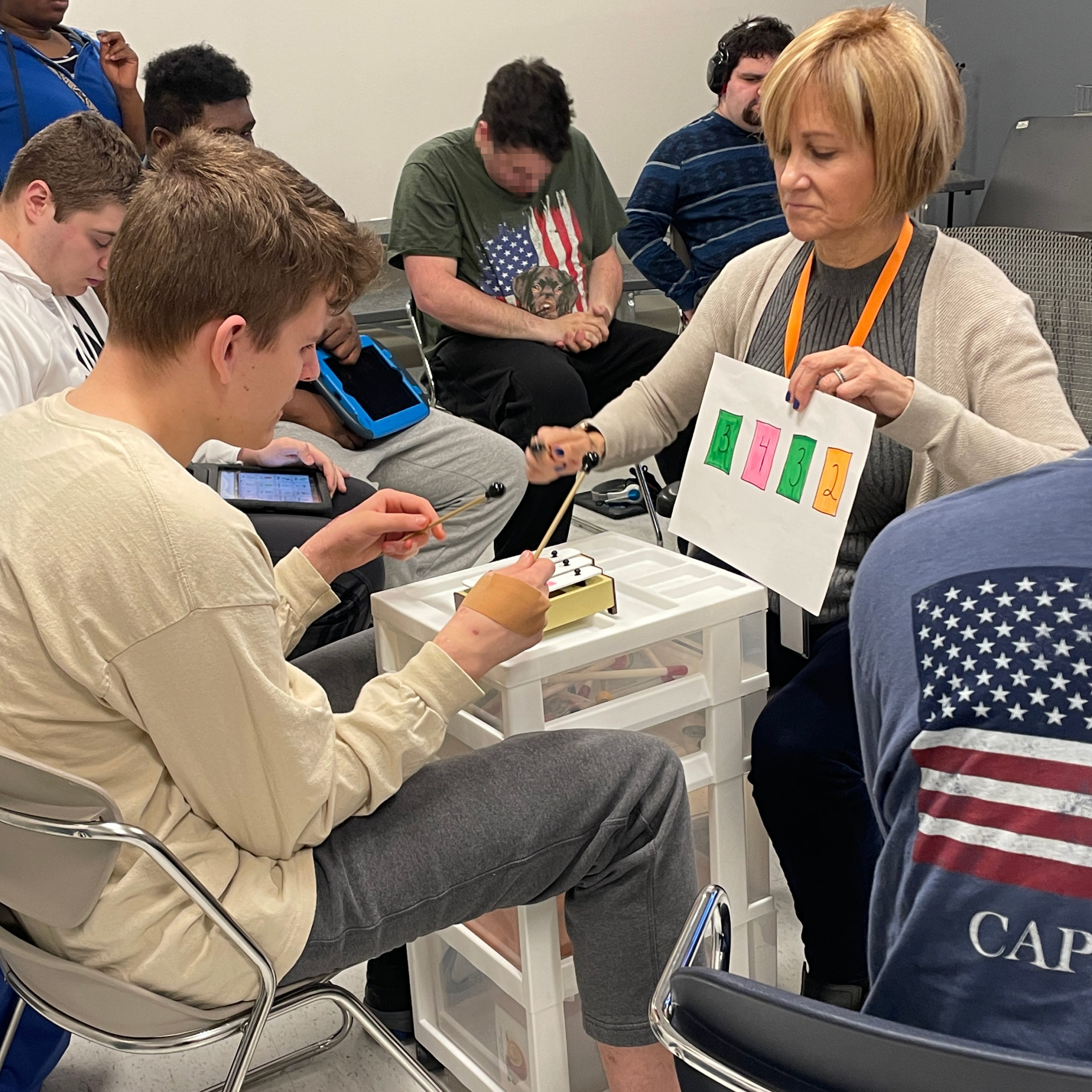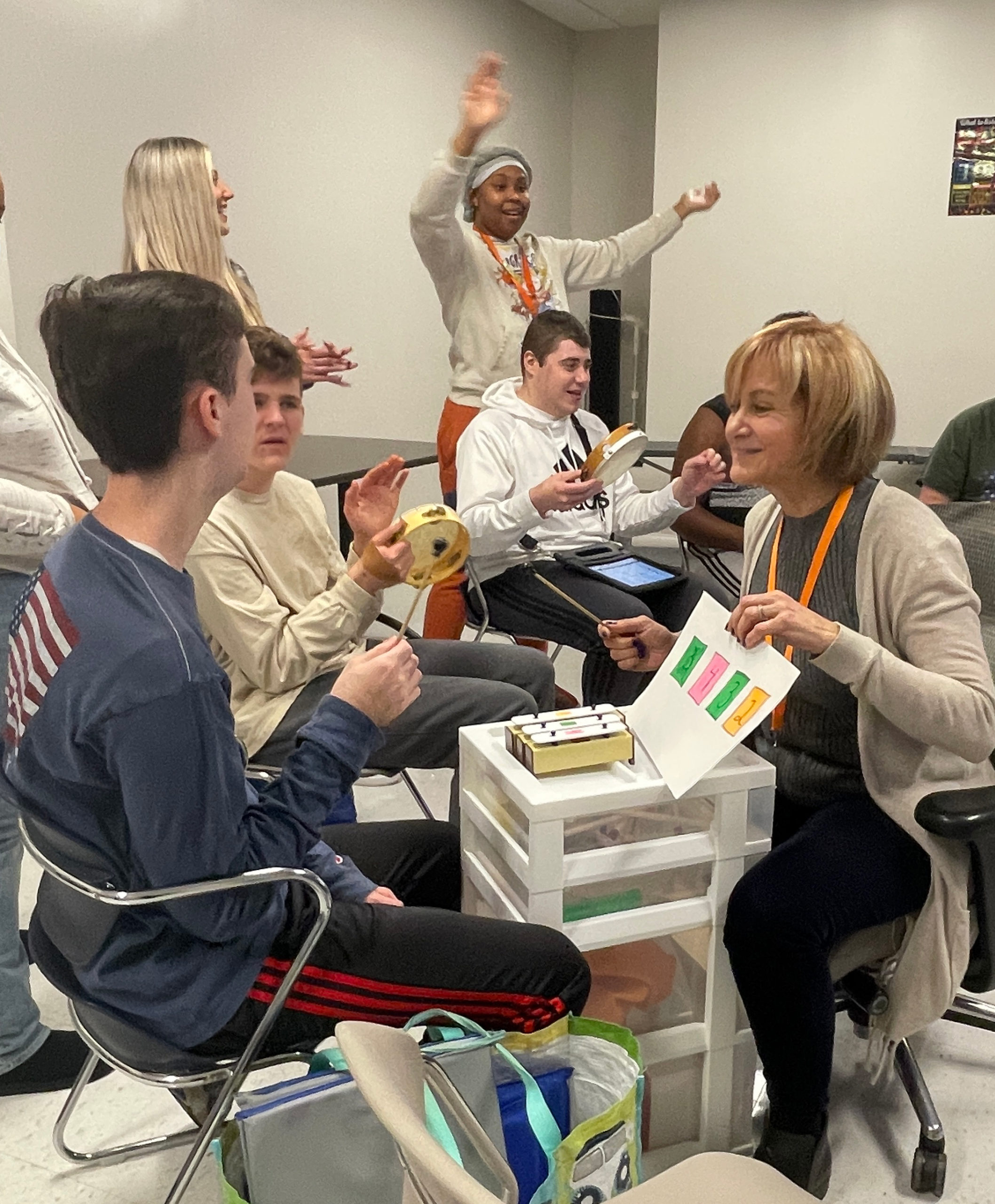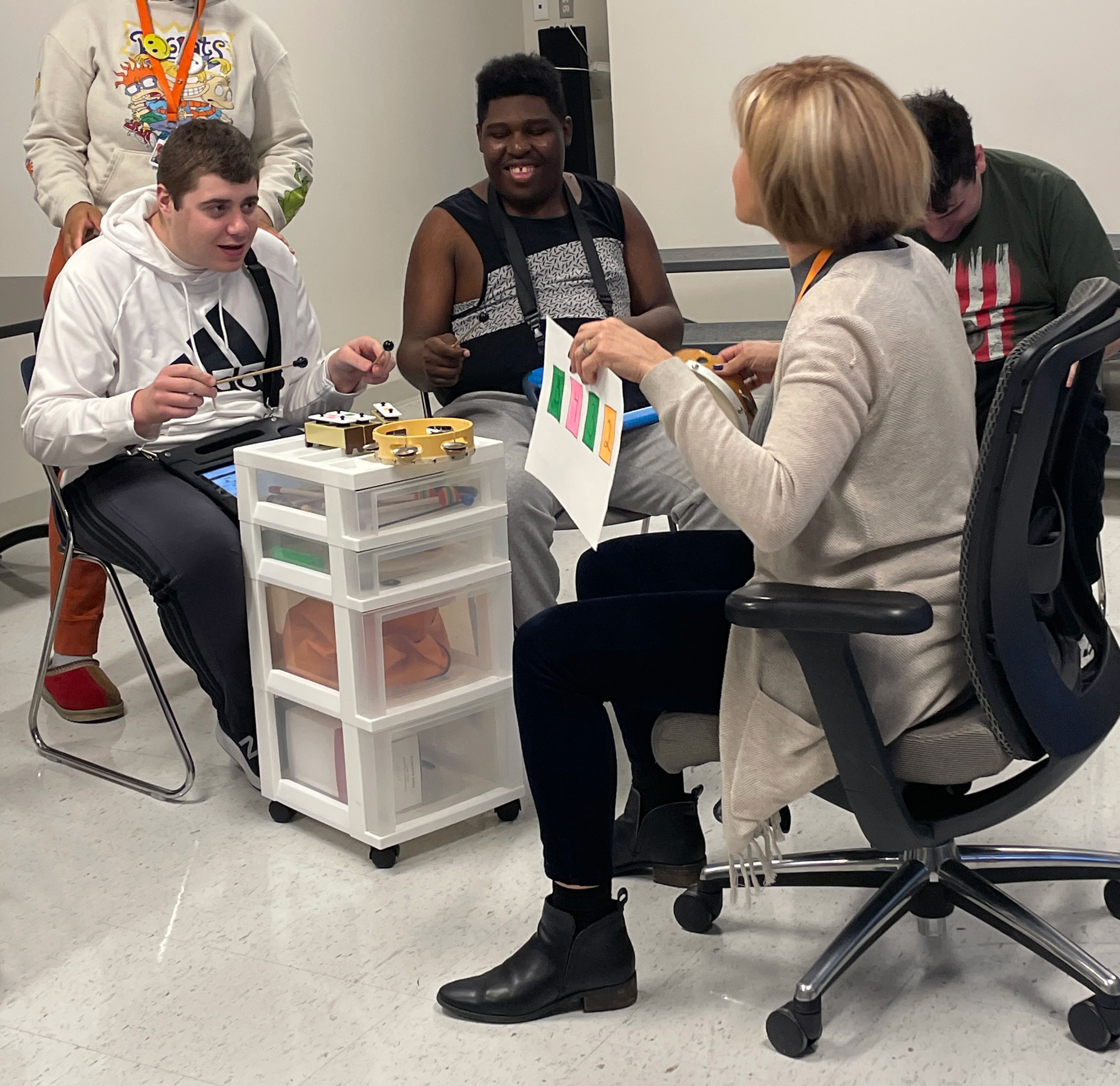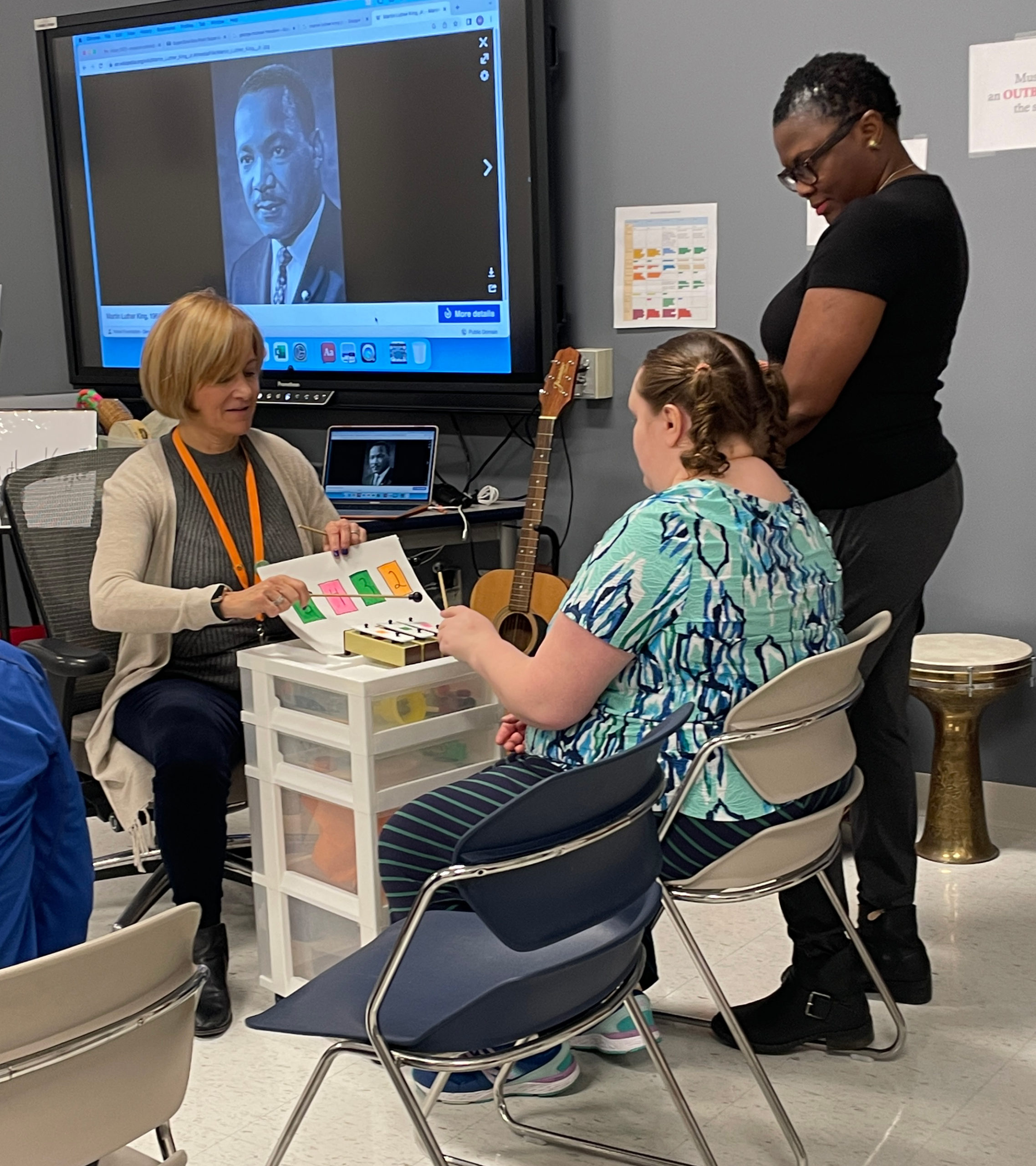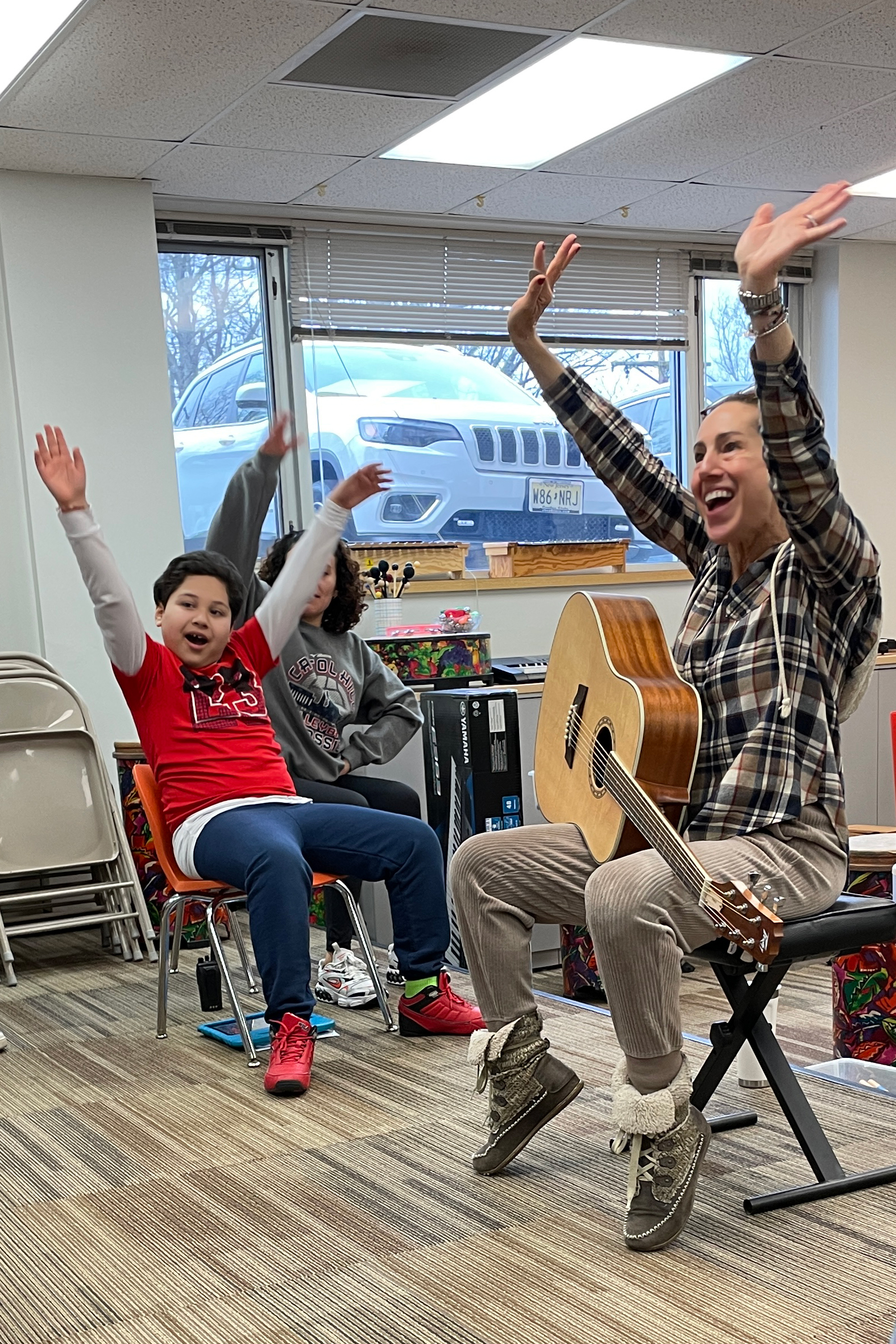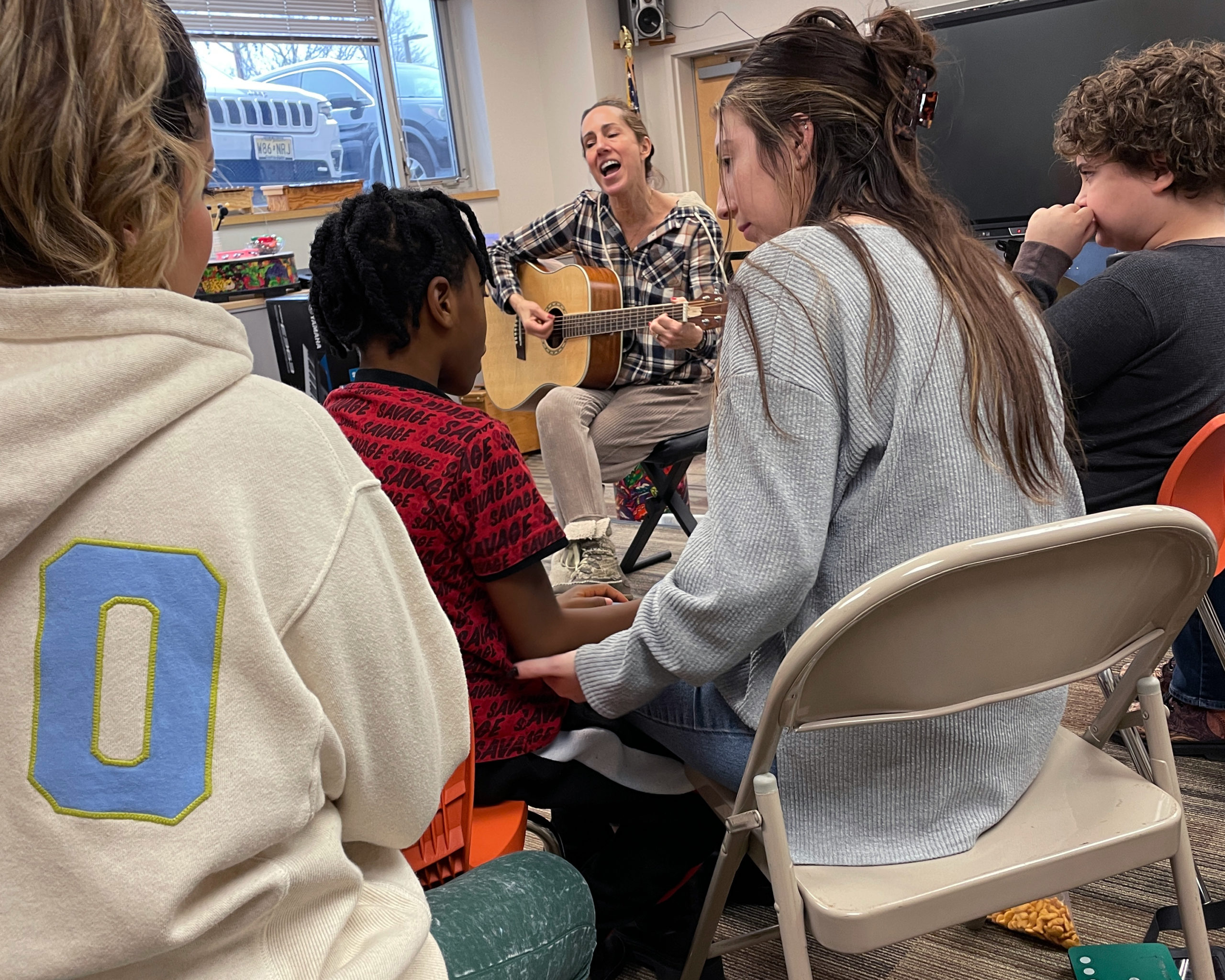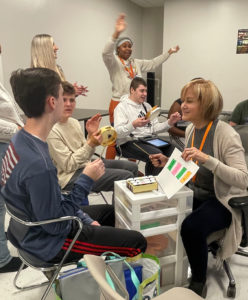 Music has taken a new tone at Academy360 following the retirement last spring of Linda Feldman. Rather than try to replace the much-loved music teacher, the Lower and Upper Schools decided to try something different – music therapy.
Music has taken a new tone at Academy360 following the retirement last spring of Linda Feldman. Rather than try to replace the much-loved music teacher, the Lower and Upper Schools decided to try something different – music therapy.
The switch from music education to music therapy is more than a change of words. At its simplest definition, it means a shift from developing and improving musical skills to using music to improve and reinforce non-musical skills – functional, physical, social. In practice, it’s about using the joy and energy found in music to help students practice daily life lessons and to have fun while doing it.
To achieve the new direction, the Lower School and Upper School have each hired music therapists to take charge of their respective music programs, with the different age groups having their own needs and interests.
Meet Academy360’s new music leaders:
Academy360 Lower School
“Who wants to go faster!?” sings “Jammin’ Jenn” to the preschool students seated in a semi-circle as a tambourine is passed from child to child. Energetically strumming her guitar while walking around the class, the music therapist bends towards one shy-faced child holding the tambourine and asks “What do you want to do?”
“Go faster” he whispers loudly, while the aides and other students shake their hands in the air.
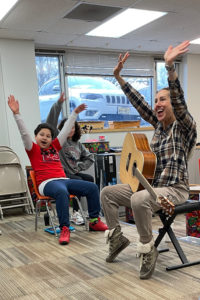
The Jammin’ Jenn Music Therapy group began providing group classes for Academy360 Lower School ESY students in 2012, and the decision was made this year to bring the group and its music therapists on board full time.
Opening in 2009, Jammin’ Jenn Music Therapy is based in Watchung, from which founder Jennifer Pacht-Goodman and her team of trained music therapists travel across New Jersey providing services to more than 20 schools in the state, as well as mental health and community-based organizations. When the pandemic restricted movement and group events, music therapy was in even greater demand and Jammin’ Jenn began conducting virtual sessions, extending their reach. Today, the business also has a YouTube channel, where they are now accessible to anyone with an internet connection.
Jenn and music therapist Nicolette Corrado hold 17 classes each week with the PSE and Middle School students. For the younger students, music is a medium for teaching a wide range of subjects, from language to basic life skills.
“We’re not expecting students to learn notes or rhythm. It’s really more about social skills. Engaging them, how to pay attention, how to make better eye contact, working on impulse control – this all makes music therapeutic,” explains Jenn.
Music education is not always the best fit for all students. With music therapy, instructors look at each student’s needs and strengths when making classroom plans.
“Who is non-verbal? Who has sensory issues? Who has behavioral issues? For some, it’s too loud. The lights are too loud. The way the teachers talk is too loud. The music is too loud,” says Jenn.
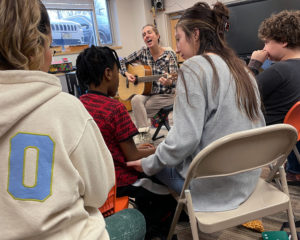 Children with special needs experience music differently, Jenn emphasizes. “It’s not quite the same to them. Music therapy is more about soothing or making them happy – addressing their sensory needs rather than grading them on playing the recorder.” She elaborates, “Each child’s needs vary. And as a music therapist, our job is to look at each child in every moment that they’re in the 30 minute group and see what we can draw out.”
Children with special needs experience music differently, Jenn emphasizes. “It’s not quite the same to them. Music therapy is more about soothing or making them happy – addressing their sensory needs rather than grading them on playing the recorder.” She elaborates, “Each child’s needs vary. And as a music therapist, our job is to look at each child in every moment that they’re in the 30 minute group and see what we can draw out.”
In the Lower School music room one January morning, Jenn plays a video for preschool students explaining the clothing items needed for winter weather, and then transitions to her guitar for the song “Dressing for Winter,” done Hokey-Pokey style. As Jenn leads them in song, each student according to their ability joins in – from arm waving to tapping toes to jumping to their feet – while aides help them act out putting on hats, shaking out scarves and pulling on their boots.
That’s what it’s all about in class, says Jenn. Students participating in group activities where one child’s enthusiasm might inspire the others to join in and eventually, hopefully, even the most-reserved classmates might be encouraged to follow the leader – such as passing the tambourine to each other and responding to musical prompts.
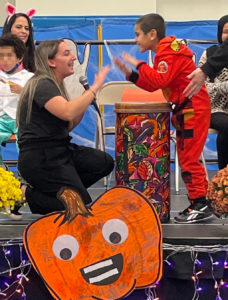
Music therapy at the Lower School was put in the spotlight this past October when family members first saw the new program in action during the Halloween show, in which song choices and performances showcased lessons being imparted in class. At the PSE show, the “Skeleton Dance” encouraged the children to identify the body parts throughout the song; another song which required shouting “Boo” at only specific moments was actually part of a lesson in impulse control. “Five Little Pumpkins?” A demonstration of understanding emotions.
With four months of A360 classroom time under their belt, Jenn considers the meaning of “success.”
“As music therapists, we don’t have expectations of the child. Success can be very individualized. It could be a non-verbal child who through song approximates a sound. That’s success. A child who typically doesn’t focus in class sits in attention because the activity is musically engaging. That is a success. Passing the maracas, waiting their turn, connecting with a song – that’s all success.”
Academy360 Upper School
“Ta Ta Ta! Ta Ta Ta” Melissa dances around her classroom, encouraging each student to strike their drum to the beat of George Michael’s “Freedom! 90.” A cacophony of noise ensues as the teenagers – some quite enthusiastic, others more reserved – pound the drums with hands and mallets while their classroom aides bop behind their chairs. “Ta Ta Ta! Very good!”
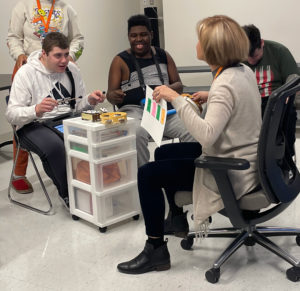 In Livingston, Melissa Waton-Cohen has joined the staff as music therapist for Upper School and YAP students. Following 16 years of teaching in the Livingston public school district, joining the Academy360 staff is a dream job for the experienced music therapist, who added a graduate degree to her resume over the pandemic lockdown and is also a certified special needs and music educator.
In Livingston, Melissa Waton-Cohen has joined the staff as music therapist for Upper School and YAP students. Following 16 years of teaching in the Livingston public school district, joining the Academy360 staff is a dream job for the experienced music therapist, who added a graduate degree to her resume over the pandemic lockdown and is also a certified special needs and music educator.
Making connections with her students is key, says Melissa, for encouraging students to truly engage with music and with their emotions.
“There are two approaches to music therapy in my experience,” Melissa says. “There’s the behavioral aspect, of course, but the other is the psychodynamic aspect, the emotional part.”
She continues, “For me, a lot of what I’ve been doing in these first months is developing relationships. You can’t do therapy unless you develop that connection with each student. It can take a while for them to grow comfortable with you, but when you gain that trust with the individual and the group, you can start initiating activities they’ve never encountered before.”
With the older students, it’s also important to understand who they are, what their interests are. Melissa makes use of popular music listened to by students and their peers to communicate the ideas underlying classroom activities.
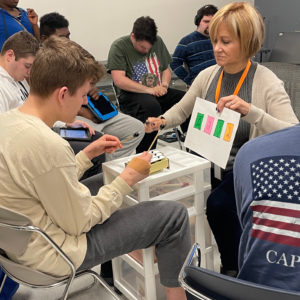
With Post Malone’s “Circles” pulsing through the classroom, Melissa uses brightly colored laminated cards to instruct students in playing the xylophone to the song’s distinctive beat. Green (ding), Pink (ding), Green (ding), Orange (ding)! And again!
Though instruments are involved, playing them well isn’t the goal. The simple exercise is meant to teach and reinforce multiple things – understanding directions, hand-eye coordination, waiting their turn, the list goes on. But also, the language and enjoyment of music can bring together students who have difficulty connecting with one another in different circumstances.
While J.J. takes his turn at the xylophone, the classmate next to him smiles and taps along on his own chair. Across the room, another student watches, bopping his head to the song. Others are quiet, but paying attention – something that isn’t always easy for students who can easily lose focus. One student with sensory issues wears noise-canceling headphones, yet is one of the best at keeping the beat.
[Story continues below the video]
Melissa Waton-Cohen and her students playing along with Post Malone’s song “Circles.”
For the students with an interest in music, playing songs in class by artists such as Post Malone is a sure way to get their attention. The use of popular music is also a bridge to making those important connections with students. And useful for reinforcing lessons learned in other classes and subjects.
George Michael’s “Freedom” anthem was on the classroom playlist during a short lesson on Martin Luther King, whose life and holiday were celebrated that week. Melissa used images passed around class and audio-visual materials to explain MLK’s message and to encourage all-important classroom interaction.
“Freedom is about caring. So, I talked to the students about the meaning of freedom, we went around the room making the peace sign, we touched hands to signify caring and emotions – and then we played!” To go along with the song’s big rousing chorus and gospel feel, out came the drums and tambourines. “We get into a groove with the rhythm and sometimes they’re all playing together – it’s a universal communication. Which is lovely.”
Emotions, inclusion, connection – these are the key aspects that come up over and over.
“I think the best part is that the energy in the room is inclusive and supportive. Because it’s fun to realize that you’re able to do it, especially if you haven’t been given the opportunity to try before. And that’s why sometimes we erupt in cheers.”
Melissa continues, “In music therapy, we’re not just trying to teach them a music skill. You’re trying to teach them engagement, enjoyment, self esteem. The emotional aspects, because to some degree everyone enjoys listening to music. And it’s something they can do to connect with each other.”
Related story: Spectrum360 Musical Talents

